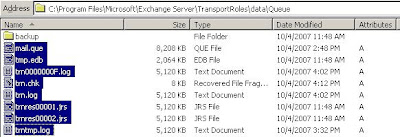So what's the deal all about. Well, it's simple enhancements from a security, performance and functionality point of view. According to a MS correspondent, the SP1 BETA it should be available in next week or so (2-3 week of December). The final RTM will be available in first Q of 2008.
First to state is the fact that it comprise of many patches, updates and upgrades previously made available via Windows or Microsoft update websites. One key improvement is the administrative enhancements to ease admins of their daily routines.
In short, Microsoft summarizes Vista SP1 as;
- Quality improvements, including all previously released updates, which address reliability, security, and performance.
- Improvements to the administration experience, including BitLockerTM Drive Encryption (BDE).
- Support for emerging hardware and standards, such as an Extensible Firmware Interface (EFI) and an Extended File Allocation Table (exFAT).
- Introduction of new cryptography standards
- Integration with security center, APIs and other interfacing mechanisms for security companies to integrate with Vista (once a huge concern with ASVs)
- Lesser crashes through analysis via the Windows Error Reporting avenue
- Better hibernation/sleep restoration (this is surely a needed!)
- Copying and extracting files should be faster! - I hope they got rid of that inaccurate graphical display and ETA timer...
- Faster IE Experience with lower CPU utilization, logon delays have been removed, increased battery life (by reducing screen redraws) and also, much needed/awaited, improvement in network file sharing by reducing the actual bandwidth used to do so
State-worthy 2: Administrative Improvements
- Bitlocker available for other than C (finally!!!)
- Group policy management enhancement
And finally, it will support SSTP, an emerging VPN protocol that work better with NATs and other challenges that legacy VPNs face.
Alright, there you go, one thing's for sure, i'm gonna' get this baby once it's out in the market. I guess i can get a copy since i'm a beta tester for certain products, perhaps could pull some strings to get the Sp1 beta prior to public release (for all kiasu's sake la)
Parts of this article is taken off the Vista team blog website at: http://windowsvistablog.com/blogs/windowsvista/pages/windows-vista-service-pack-1-beta-whitepaper.aspx






